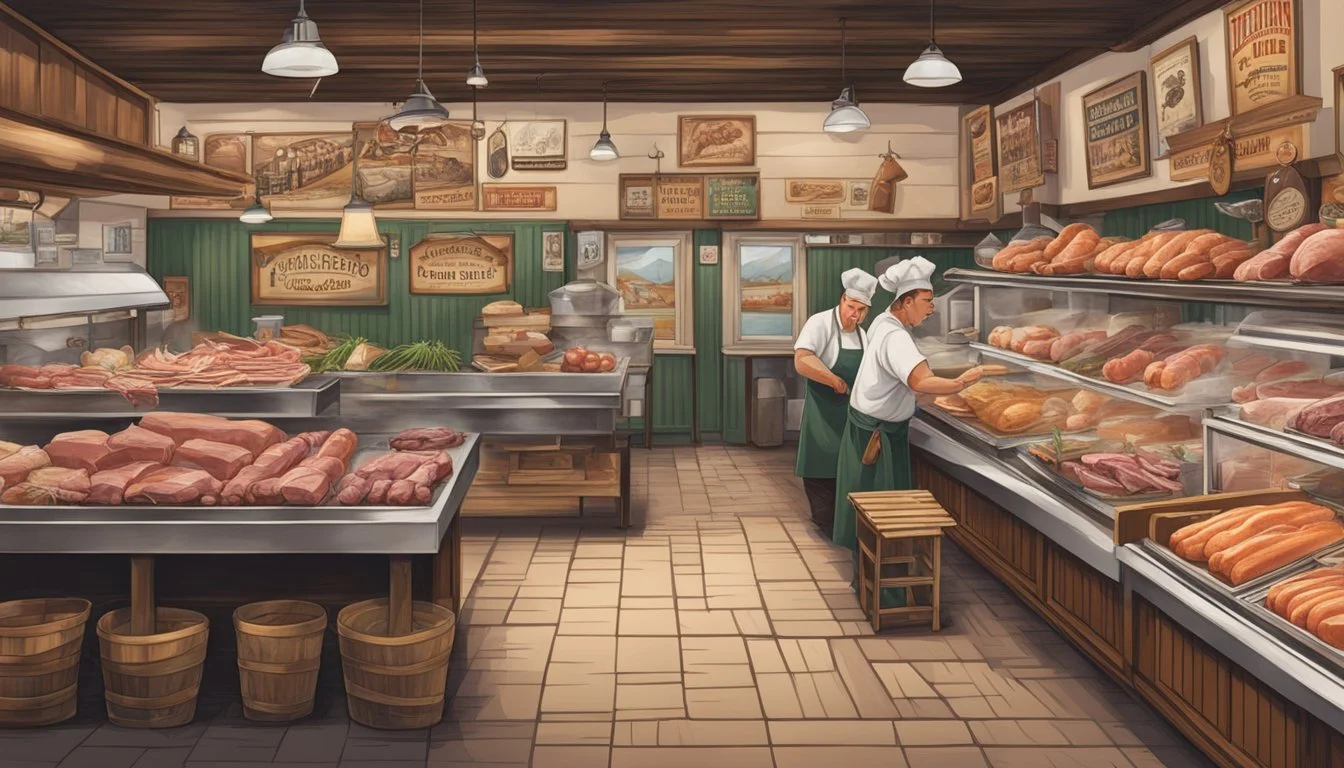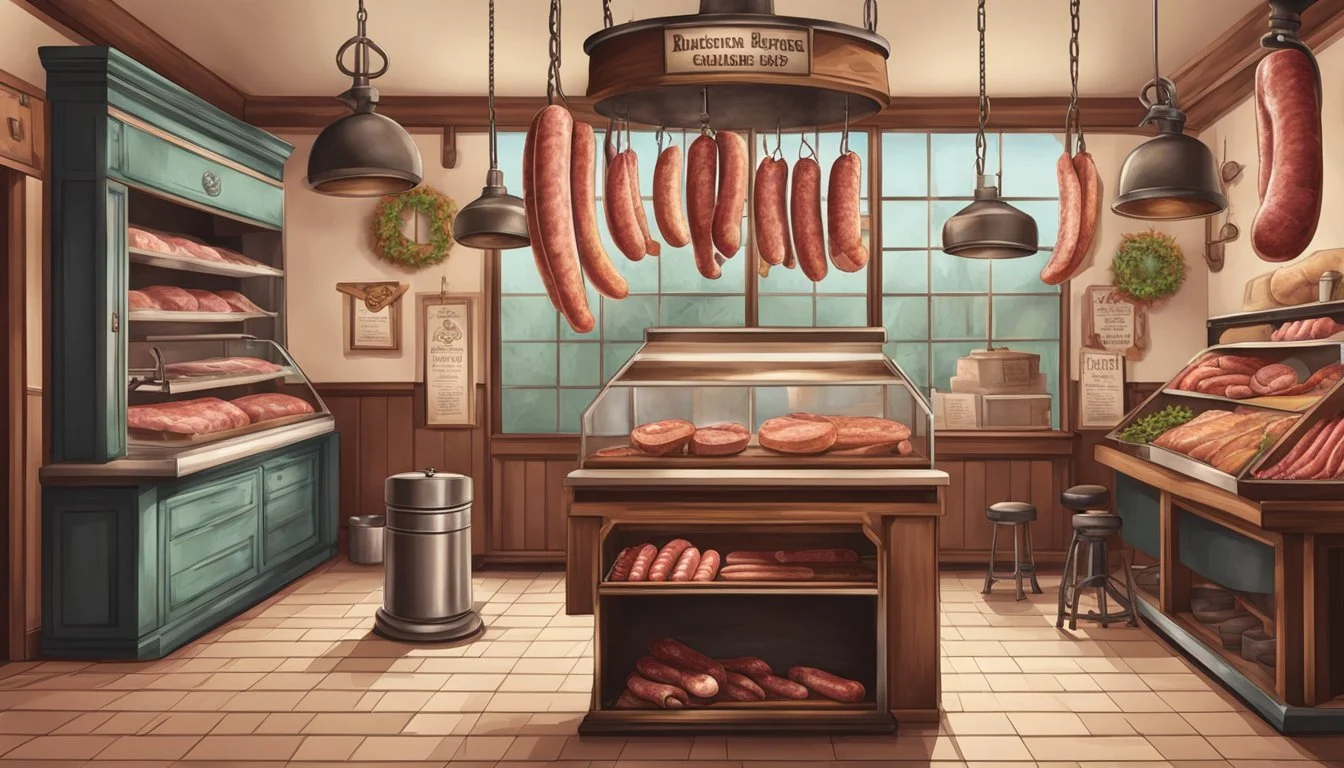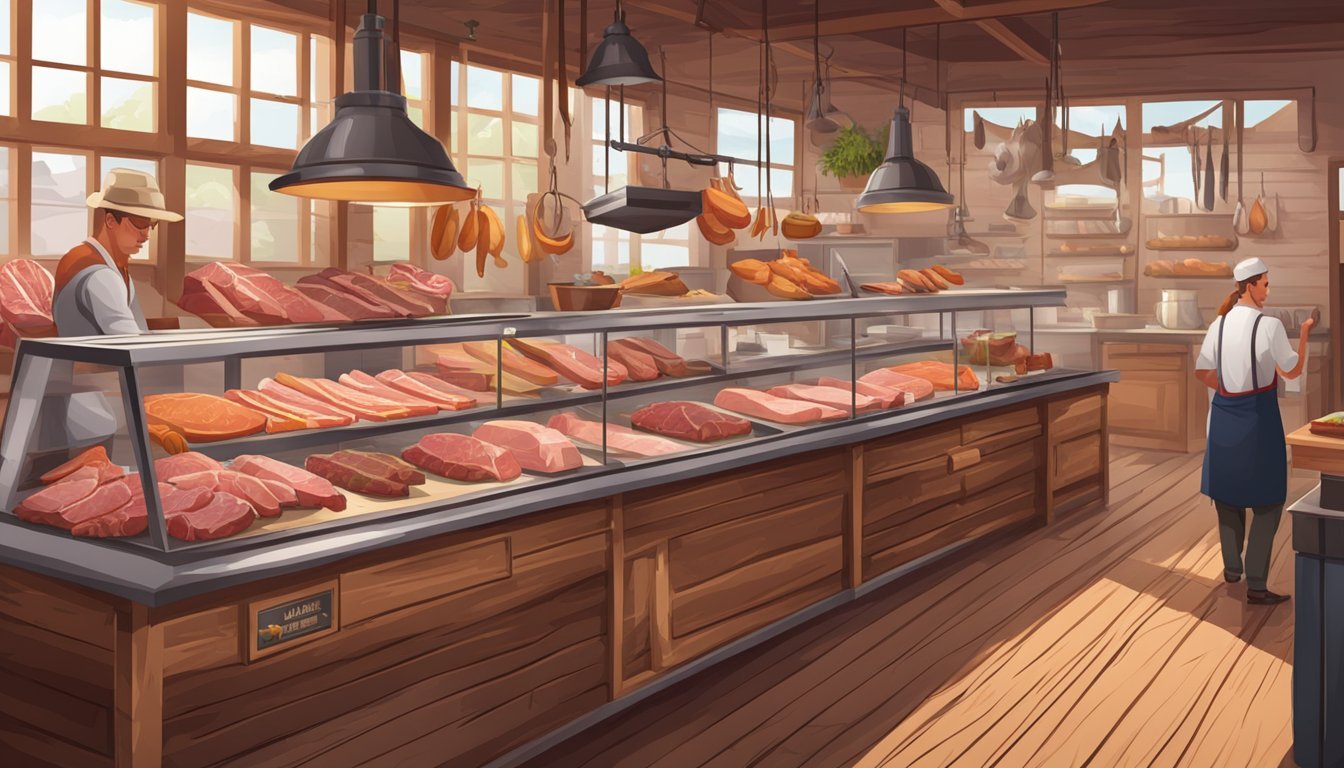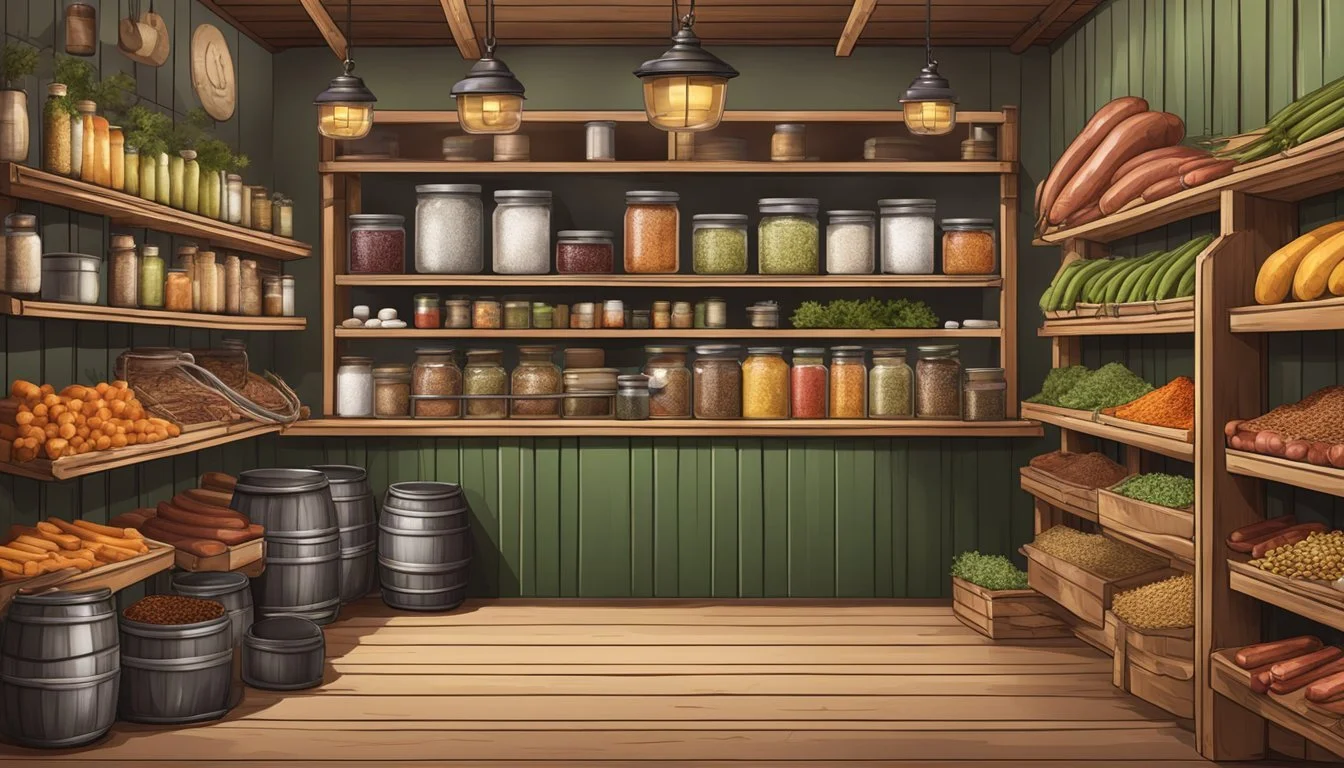The History of German Texan Butcher Shops and Meat Markets
A Cultural Legacy Revealed
The intertwining of German traditions with Texan culture is prominently reflected in the butcher shops and meat markets of Central Texas. Dating back to the influx of German immigrants in the 19th century, these establishments became cornerstones of the community, weaving their culinary heritage into the fabric of Texas cuisine. With a focus on quality and craftsmanship, these German-Texan butchers introduced recipes and techniques that have stood the test of time, some remaining unchanged for over a century.
Central Texas, with towns such as Lockhart, became known as hubs for this unique culinary tradition. German expertise in meat processing and smoking was passed down through generations, effectively fusing with the regional tastes and preferences to create a distinctive food experience. The meats, sausages in particular, offered by these shops are characterized by their robust flavors, a testament to the carefully guarded recipes and methods honed by these early immigrants.
These butcher shops and meat markets played a significant role in shaping the meat-centric identity of Texas cuisine. They provided a social and economic foundation for their communities, a tradition of excellence, and a legacy of flavors that are quintessentially Texan yet undeniably German. Their influence endures in modern Texas barbecue (What wine goes well with barbecue?) and remains a treasured aspect of the state's diverse cultural tapestry.
Origins of German Texan Butcher Shops
The establishment of butcher shops in Texas by German immigrants during the nineteenth century marks a significant influence on the region's culinary traditions and cultural heritage.
Early Immigrant Influence
German immigrants began arriving in Texas during the mid-nineteenth century, carrying with them their culinary traditions and skills in meat processing. These settlers were crucial in establishing the foundation of what would become a distinctive Texan food culture. They introduced techniques and recipes that had been honed over generations in Germany.
Settlement Patterns and Food Culture
The majority of these German settlers concentrated in Central Texas, integrating their food culture into their new communities. Towns such as Fredericksburg, New Braunfels, and Lockhart became centers of German cultural heritage, where butcher shops and meat markets flourished. The availability of beef from the cattle industry in Texas provided ample resources for these shops to thrive.
German Meat Processing Techniques
German butchers in Texas were known for their meticulous meat processing techniques. These included smoking, curing, and the creation of sausages with a blend of beef and pork. The skills they brought from Germany were adapted to local ingredients, giving rise to a unique German Texan culinary tradition. The use of local hardwoods like oak and pecan for smoking contributed to the distinctive flavor of their meat products, distinguishing them from European counterparts.
Evolution of Meat Markets
German Texan butcher shops and meat markets have undergone significant changes as they adapted to the diverse cultural milieu of Texas. These venues have skillfully blended the rich meat culture of German heritage with Texan influences, leading to a unique culinary fusion that reflects the state's identity.
Adaptation to Texan Lifestyle
German immigrants brought their butchering skills to Central, South, East, and West Texas, where they soon learned to cater to local tastes and preferences. They intertwined their traditional practices with Texan customs, creating a distinct meat market niche. This adaptation meant understanding the importance of local lifestyle, such as outdoor grilling and barbecue, which required meats like brisket and ribs well-suited for these methods.
Incorporation of Texas Ingredients
In a quest to infuse local flavor, German Texan butchers began incorporating Texan ingredients into their recipes. They used native spices, onions, salt, and pepper to complement the meats they offered. The combination of German techniques with Texas flavors resulted in products like the Texas German sausage, a beloved local specialty.
Spices Used: Black pepper, Garlic
Additional Ingredients: Onions, Local Beef
Products: Texas German sausage
Generational Changes in Butcher Practices
As generations passed, family-owned meat markets experienced a shift in practices. Newer generations of butchers innovated and experimented while maintaining reverence for their German origins. These generational changes often reflected evolving consumer preferences and the necessity to keep up with industrial advances and food safety standards.
Notable Changes:
Improved refrigeration techniques
Adaptation to health and safety regulations
Expanded product range to meet customer demand
Meat Types and Cuts
German Texan butcher shops are known for their unique meat offerings and traditional cuts. With a deep history in providing quality meats, these shops have specialized in pork and beef, while also introducing a variety of other meats to cater to the Texan palate. They have adapted their offerings to enhance the local barbecue experience.
Pork and Beef in German Texan Shops
Pork and beef are staples in German Texan butcher shops. These meats are often prepared following traditional German sausage recipes, which typically include a meticulously crafted mix of ground pork, black pepper, garlic, and onions. Shops may also offer a variety of beef cuts, from brisket to ribs, essential for barbecue.
Pork: Sausages, chops, ribs
Beef: Brisket, sirloins, ribs
Introduction of Other Meats
Although pork and beef dominate, German Texan shops have integrated meats like chicken to diversify their offerings. These meats are incorporated with the same attention to flavor and quality that is representative of the German Texan tradition.
Chicken: Offered in certain shops
Other meats: Occasionally featured to complement traditional selections
Customization of Cuts for Texan Barbecue
German Texan butchers tailor their cuts specifically for the Texan barbecue method. They understand that certain cuts, such as brisket, require precise preparation to achieve the desired tenderness and flavor when smoked. Customization of these cuts is a service that sets these butchers apart.
Barbecue cuts: Brisket tailored for smoking
Other cuts: Adjusted upon request to suit various barbecue styles
Seasoning and Flavoring
The distinctive taste of German Texan sausages and meats owes much to the specific blends of spices, the adaptations of sauce recipes, and the influence of local woods used in the smoking process.
Role of Spices in German Sausages
German sausages made by Texan butchers are renowned for their robust flavor profiles. Salt and black pepper form the base of this culinary symphony. Yet, it's the inclusion of garlic, and frequently cumin and cayenne, that imparts a bold, savory aroma and a heat that complements the meat's richness. Such spices are carefully measured and mixed to ensure a consistent taste that has become synonymous with German Texan sausages.
Adaptation of Sauce Recipes
The sauce accompanying the smoked meats (What wine goes well with smoked meats?) is as crucial as the spices within the sausages. German Texan sauces have evolved, blending traditional German recipes with local Texan preferences. These sauces often feature a base of tomatoes or vinegar, combining spices such as cumin and cayenne for a balanced tangy-sweet and spicy profile.
Influence of Local Woods on Smoking
Smoking meats is an art form that defines the flavor of German Texan barbecue. Local woods like mesquite, known for its strong, earthy notes, hickory, which provides a sweet, yet strong flavor, and oak, offering a more subtle smokiness, are meticulously selected. Each wood type distinctly influences the aroma and taste of the smoked meats, with the choice of wood often left up to the preference of the butcher or pitmaster to create their signature dish.
Cooking and Smoking Methods
The culinary legacy of German Texan butcher shops and meat markets is a narrative steeped in precision and tradition, particularly in the cooking and smoking methods that define this regional fare. The transformation from butcher shops to iconic barbecue joints hinges on these established techniques.
Tradition of Smoking Meats
In the early days, German Texan butchers utilized smoking primarily as a method of preservation. Meats, especially sausages, were smoked over a variety of woods which complemented the blend of spices and garlic used in their preparation. Initial smoking methods involved simple structures like smokehouses where meats were hung to absorb the flavorful smoke over several hours or even days. This technique not only preserved the meat but created a unique flavor profile that became synonymous with Central Texas barbecue.
Transition to Commercial Barbecue
As these butcher shops evolved, the smoking methods transitioned from preservation to flavor enhancement for commercial sale. Pitmasters adapted and fine-tuned their techniques, turning smoking into an art that characterized Texas barbecue. The introduction of specially designed smokers and grills allowed for more controlled cooking environments. The move towards barbecue joints saw a transformation where smoked meats (What wine goes well with smoked meats?) were no longer just a commodity but a culinary experience, with places like Lockhart becoming pivotal in this shift, earning the title of "Barbecue Capital of Texas."
Innovations in Smoking Techniques
Over time, smoking techniques have seen significant innovations. Modern pitmasters explore various types of woods to influence the flavor profiles of the smoked meats. They rigorously control the temperature and smoke levels, ensuring each cut of meat, be it brisket or sausage, is cooked to perfection. Innovations in smoker design, from traditional offset smokers to sophisticated digital units, demonstrate the progression while respecting the time-honored tradition of Texas barbecue.
Influential German Texan Meat Markets
German Texan butcher shops and meat markets have been pivotal in shaping the region's culinary landscape. These establishments have rooted German tradition deep into Texan soil, influencing not only local cuisine but also community and culture.
Kreuz Market and Its Legacy
Lockhart, Texas is home to Kreuz Market, a meat market and barbecue restaurant with its inception dating back to 1900. Charles Kreuz Sr. established it as a grocery store and meat market. Kreuz Market is renowned for its adherence to traditional cooking methods, using brick pits and burning post oak to smoke meats. It notably shuns the use of barbecue sauce, letting the flavor of the meat speak for itself, a testament to its German heritage.
Role of Southside Market in Sausage Making
In Elgin, the Southside Market claims the title of the oldest barbecue joint in Texas, having opened its doors in 1882. This meat market's specialty, the Elgin Hot Sausage, also known as "Elgin Hot Guts," is a critical component of Central Texas barbecue. Southside Market's influence extends beyond its smoked sausages, passing down techniques germane to Texan and German culinary fusion.
Louie Mueller Barbecue's Impact
Louie Mueller Barbecue from Taylor, Texas, founded in 1949, has set a benchmark in barbecue. With its heavy emphasis on high-quality beef, it upholds the German Texan legacy through exceptional smoked meats. Mueller's technique of smoking with local woods and focusing on the meat's natural flavors has garnered national acclaim, underscoring the symbiosis between German influences and Texan barbecue tradition.
Cultural Integration
The merger of German butchery techniques and Texan flavors has created a unique cultural and culinary landscape across the state of Texas, enriching both its economy and social fabric.
German and Texan Culinary Fusion
German settlers brought their rich culinary traditions when they migrated to Texas during the 1830s and 1840s. Texas meat markets and butcher shops, often operated by Germans and their descendants, prominently feature German-influenced meats such as sausages. The famous Texas barbecue scene also owes a considerable debt to these German influences, blending traditional smoking techniques with local spices and flavors, resulting in savory dishes that are both distinctly Texan and reminiscent of their German heritage.
Impact on Local Economy and Tourism
The confluence of German and Texan meat-processing skills has not only enriched the local cuisine but also bolstered the local economy. The demand for authentic, high-quality Texas-German sausages and meats sustains several butcher shops and meat markets, many of which are family-owned and have been operating for generations. Additionally, the unique culinary offerings draw visitors from across the state and beyond, contributing to the tourism sector, and fostering economic growth.
Celebration of Heritage through Food Events
Events like Wurstfest, celebrated in New Braunfels, Texas, serve as a testament to the enduring legacy of the Texas-German community. Attracting over 100,000 visitors, this festival is a vibrant celebration of cultural heritage through food. Here, people indulge in traditional sausage varieties, beer, and partake in German customs, underscoring the integral role food plays in cultural identity and community bonding.
Legacy and Future Trends
German Texan butcher shops and meat markets stand as strongholds of cultural heritage, blending time-honored methods with emerging trends that point towards sustainability and innovation. They both preserve rich culinary traditions and shape the future of Texas BBQ.
Preservation of Traditional Practices
German Texan butcheries have staunchly upheld the preservation of traditional practices. Generations of butchers have meticulously maintained the art of sausage making and meat preparation, ensuring that authentic flavors continue to thrive in Texas BBQ. These age-old methods serve not only as a bridge to the past but also as a foundation for culinary innovation.
Modern Approaches to Butchery and Barbecue
Modern butcheries are integrating innovative techniques into their repertoire. They employ a mix of classic and contemporary methods, leveraging technology to enhance meat quality and safety. By adopting sustainable practices such as whole-animal butchery, these markets are responding to consumer preferences, all the while keeping the essence of the Texas German culinary legacy alive.
Influence on Next-Generation Pitmasters
The legacy of German Texan butchers is vivified through the influence they have on next-generation pitmasters. Through mentorship and the transfer of knowledge, these seasoned artisans inspire a new breed of BBQ experts who uphold the traditional flavors while experimenting with modern smoking and grilling techniques. This cultural transmission ensures the endurance and evolution of Texas BBQ.
Through the balance of tradition and innovation, German Texan butcher shops and meat markets continue to be a vital part of the state’s culinary and cultural landscape, honoring their legacy while forging new paths for the future.
Conclusion
The fusion of German and Texan cultures has given rise to a unique culinary tradition in which German Texan butcher shops and meat markets play a pivotal role. These establishments honor their German roots while embracing the Texan love for BBQ culture. Their commitment to quality and craftsmanship is a source of pride within both culinary circles and local communities.
German immigrants in Texas have preserved their ancestral food preparation methods and influenced local cuisine, especially in barbecue. The Texas-German sausages are the epitome of this culinary syncretism, closely tied to the state's identity as a bastion of diverse food traditions.
The cultural heritage of German Texan butchers and meat markets is manifested in the careful selection of meats and spices and the meticulous preparation styles. Patrons of these markets appreciate the historical significance ingrained in every serving. It is not merely about sustenance; it is an experience steeped in history and pride.
In preserving their centuries-old recipes, these markets serve as custodians of tradition while continuing to adapt to the tastes of a modern Texas. Indeed, German Texan butcher shops and meat markets are not just purveyors of fine meats; they are vital keepers of a rich cultural legacy that continues to shape Texas's culinary landscape.








